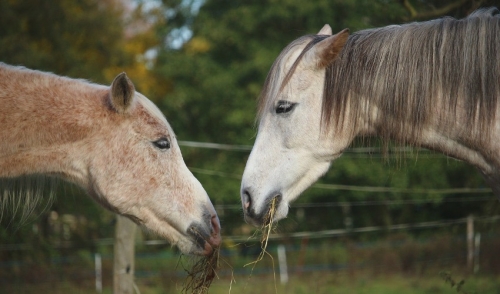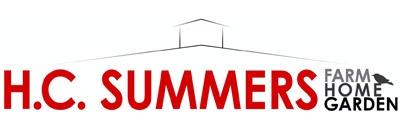
How to Find the Balance between Forage and Feed for Your Horses while Avoiding Obesity
How do you provide proper nutrition to them without an overabundance of calories?
You can restrict time spent grazing to a few hours per day or reduce the amount of hay offered to 1.5 – 2% of their body weight and this will certainly help control calorie intake, but sometimes these horses will still gain weight if fed the minimum 3.5 – 4 lbs of feed. In these cases, feeding only 1 – 2 lbs of a formulated feed that was designed to be fed at higher feeding rates can result in nutritional deficiencies in the diet. You don’t want to increase the amount of feed and end up with an obese horse, so what do you do? This is where “forage balancers” or “ration balancers”, such as Purina Nature’s Essentials Enrich 12™ and Enrich 32™fit very nicely.
These products are formulated to be low in calories and to meet protein, vitamin and mineral requirements in 1 – 2 lbs per day for 1000 – 1200 lb horses. With these two products, three eight ounce cups equals one pound. They are a great option for horses that maintain good condition on hay or pasture alone and just don’t need the calories that would come with 3.5 lbs or more of a formulated feed. The Nature’s Essentials product you choose depends on the type and quality of forage available. Enrich 12™ works well for mature horses eating green pasture or high quality hay such as alfalfa, while Enrich 32™ has a higher protein content to better fortify a typical grass hay diet or for horses that are still growing and need a higher protein balance to better support growth and development.
Horses that are working hard, are lactating or are eating average quality hay will still benefit from a well formulated feed product fed at the recommended feeding rates. But for those less active horses, easy-keepers, or those with access to exceptional quality forage, you may want to look at Purina Nature’s Essentials Enrich 12™or Enrich 32™ to meet nutrient requirements without adding unnecessary calories.
